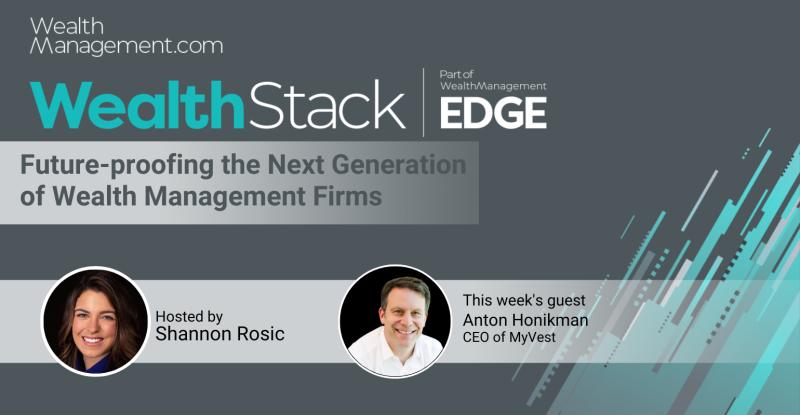What technology trend in wealth management is most closely tied to firm growth and advisor retention? Many industry observers would likely answer “digital” or “frictionless process automation.” However, there is a strong contender for any firm looking to grow assets and court (or keep) top advisors: Discretionary Portfolio Management (DPM) technology.
MyVest partnered with F2 Strategy to shed light on this trend so that they could define and sift through the nuances, drivers, frustrations, and best practices around discretionary portfolio management (DPM) programs. The research they’ve conducted includes interviews with wealth management and consulting firm executives as well as reviews of past analyses, plus F2 Strategy’s firsthand experience in reviewing DPM tools and deploying them to advisors. In this report, ‘Customization vs. Control in Wealth Management: Advisor Discretion Doesn’t have to be a Zero-Sum Game’ they unveil how broker-dealers, banks, and wirehouses should respond to the tension between advisor customization and firm-level control of portfolios.
“In our respective work we’ve encountered many firms dealing with the inherent challenges of advisor driven programs. This is often overlooked in the media in favor of more trendy topics. We wanted to remind the market of the practical issues organizations face while managing these programs.”
Why is it important?
Advisor access to tools and the flexibility to create client-customized portfolios continue to be significant drivers of growth, the report says. Based on the research, advisors have a few main drivers:
- Discretion over their portfolios, which allows them to scale and take action as needed
- Customization, which puts them in a position to meet investor demand for personalized advice and to justify their fees
DPM is a fee-based discretionary advisory program where financial advisors act as money managers for their clients. For advisors, they can win over a new slice of clients who were previously served by family offices and boutique RIAs exclusively. For firms, however, increased advisor discretion may come at a cost. DPM portfolios are generally left to the whims and management processes of their advisors. This means serious risks—like company concentrations, portfolio drift, performance inconsistencies, and compliance issues—can get out of control without anyone knowing about it.
The report overviews several risk management approaches depending on where a firm wants to draw the line between control and customization. Here, you can read about how firms are balancing customization with control, what the role of technology in this process is, what to look for in a DPM technology solution, and what common frustrations you can encounter with the process.
DPM and technology
The improvement in technology to oversee, manage, and report on DPM programs has significantly contributed to the DPM trend, says the report.
“The conflicts between advisor discretion and centralized oversight pose an existential challenge to wealth management executives: modernizing their business to be more scalable and compliant can be at odds with retaining advisors and their books of business. We strongly believe that tech can help solve these conflicts and wanted to bring that to light.”
According to the research, to run their DPM platform, firms should use standardized client profile and risk tolerance technology; have a set of firm-approved models and securities to deploy into client portfolios; and use automated monitoring, trading, and rebalancing. In addition, the success of implementing DPM will depend on external partners that help firms make the transition from planning to implementation.
How to get ready for DPM
As the new trend picks up stream, players of the wealth management market are bound to fit in.
“This research has prompted us to spend more time with our clients on developing their strategy to evolve their operating models over time towards a better balance between which portfolio management functions can be centralized vs decentralized. Our research subjects demonstrated different approaches along that spectrum.”
With this report, MyVest and F2 Strategy urge wealth management firms to choose supportive, configurable technology so that firms can manage the balance between centralized standards and advisor retention. In the long term, the boundaries between advisor-driven and centrally managed programs will blur, and all programs will exist on a spectrum with varying levels of configurable advisor discretion. They also drew WealthTech executives’ attention to the DPM trend so they could adapt and help advisory firms grow. Such partnerships will become especially beneficial for both sides.
“We’ve received enthusiastic responses from people who run Rep-as-PM programs after publishing this paper in October. They told us the analysis is “spot-on” and has informed their efforts to improve their programs. So our partnership will continue to promote this issue to expand awareness of the potential solutions.”
Read the full article in WealthTech Club.


![Advisory Firms Work to Scale Rep-as-PM Programs [FundFire]](https://myvest.com/wp-content/uploads/FundFire-Interview.jpg)



![Why Direct Indexing Isn’t Yet Taking Over the Investing Universe [Financial Advisor]](https://myvest.com/wp-content/uploads/FA_magazine-e1678729635277.png)